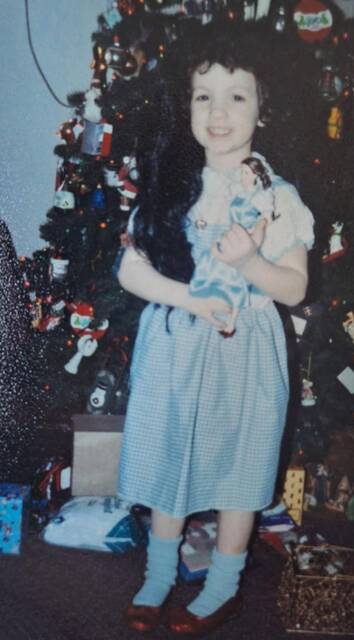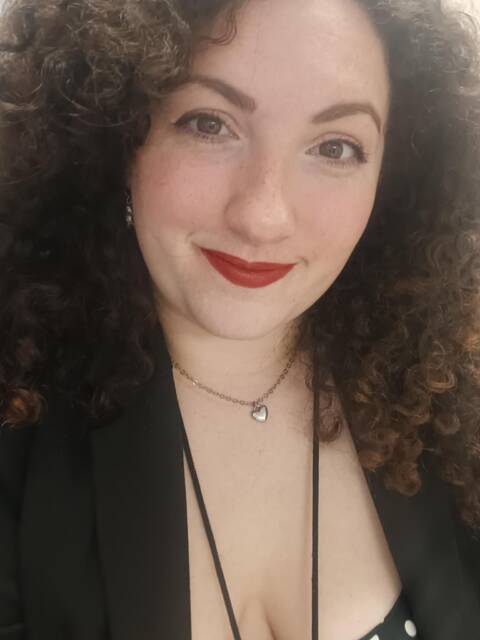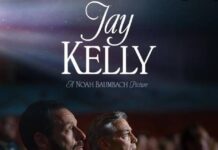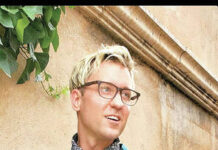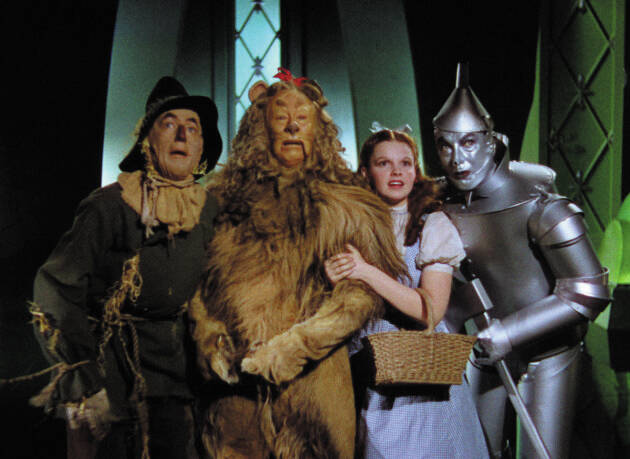
Metro-Goldwyn-Mayer Studios spent a then jaw-dropping $2.7 million on ‘The Wizard of Oz.’ The company didn’t break even on its investment until 1949, when the film was re-released to theaters.
Courtesy Photo
86 years ago, MGM’s “The Wizard of Oz” premiered at the Leows Capitol Theatre in New York City.
Roughly 25 years ago, I received a wig, blue checkered dress and ruby slippers for Christmas so that I might look the part of Dorothy as I went around the house singing “Somewhere Over the Rainbow.”
I can’t remember a time when that film, and specifically Judy Garland’s performance, wasn’t a part of my life. It’s just always been there, like an extension of my own body. Every line, every sound, every image, is burned into my brain.
I guess that’s how it is for most of us. At this point, it’s hard to imagine a world that hadn’t yet seen those iconic ruby slippers, heard Margaret Hamilton’s witchy cackle or Dorothy’s famous line, “Toto, I have a feeling we’re not in Kanas anymore.”
Like any cultural touchstone, there was before “The Wizard of Oz” and after “The Wizard of Oz.”
The film is notable for its use of three-strip Technicolor, an intricate process that involved special cameras and incredibly hot studio lights, that produced those vibrant, and iconic visuals we all know so well, from Dorothy’s glittering, ruby red slippers to the brightness of the yellow brick road and the deep green of The Emerald City.
“The Wizard of Oz” was by no means the first film to use a version of the technicolor process. The Technicolor Motion Picture Corporation began developing a full-color process as early as 1929. It originally existed as a two color system, red and green, which was used in only one film in 1917.
However, “The Wizard of Oz,” is certainly one of the most popular and well known films to use technicolor and its success, along with that of “Gone With the Wind,” which was also released in 1939, went a long way in convincing Hollywood that it might be a viable filmmaking method.
I mean, who can forget the jaw-dropping moment when Dorothy first lands in Oz and opens the door to find a strange and colorful world so unlike the one she came from? If there was any defense for making the transition from black and white to color, especially color so visceral, that one moment was it.
“…The Wizard of Oz drew the most vivid contrast between two possible screen worlds, a grim monochromatic Depression-scape and what was called (the modifier was almost part of the trademark) Glorious Technicolor,” wrote Thomas Doherty in a recent article for The Hollywood Reporter.
Unfortunately, Technicolor was expensive and cumbersome and its heyday didn’t last long. By 1954, it was replaced by Eastmancolor, which was far more efficient and cost-effective.
As such, “The Wizard of Oz” stands as a testament to old Hollywood indulgence and glamour that was short lived and now, long gone.
But it isn’t just the visuals that make it so timeless. The film features some pretty incredible, cutting edge special effects that make it mesmerizing to watch nearly a century later. Glinda coming down in her cotton candy bubble, the horses in Oz changing colors, the twister, the feet of the The Wicked Witch of the East curling underneath Dorothy’s ruined farmhouse…it’s pure movie magic.
“The Wizard of Oz” showcases the absolute best of what filmmaking can achieve — not just of the time, but of any time.
And then, of course, there’s Judy Garland.
Before I even understood what acting was, she was my favorite performer. Even today, there is something so soothing about her voice, so familiar and safe. She had the kind of vocal prowess most singers can only dream of. Her powerful, brassy vibrato, the way she’d seamlessly transition between different dynamics, made her a once in a lifetime talent.
I don’t remember this, but my mother tells me that I used to watch “The Wizard of Oz” and get up to perform ‘Somewhere Over the Rainbow’ along with Judy, while I cradled my stuffed Toto.
Although my memories of that time are fuzzy, I was only three for God’s sake, I do know that when I watch “The Wizard of Oz” now, at nearly 30 years old, it feels like coming home.
And as Dorothy says, “There’s no place like home.”
In Frame is a weekly arts and entertainment column focusing on everything from pop culture and new movie releases to the local arts and culture found right here in NEPA. News reporters Sam Zavada and Margaret Roarty contribute to this column.
In Frame is a weekly arts and entertainment column focusing on everything from pop culture and new movie releases to the local arts and culture found right here in NEPA. News reporters Sam Zavada and Margaret Roarty contribute to this column.

